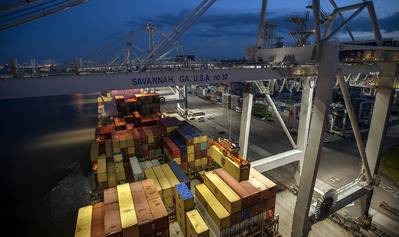The three-month settling-in period suggested by the IMO to its Member States in which competent authorities were urged to adopt a ‘practical and pragmatic’ approach to the enforcement of the SOLAS revision stipulating all packed containers have a verified gross mass (VGM) before being stowed aboard a ship comes to an end on October 1.
Long-time champion of the cause of safer container transport and a leading insurer of the international freight industry, TT Club believes that, although reported levels of compliance since the introduction of VGM on July 1 have been encouraging, much still needs to be done to achieve accurate VGM certification and universal enforcement of the rules.
A recent declaration by the liner shipping association, the World Shipping Council (WSC), together with feedback from various container terminals, indicates that the current compliance rate is as high as 95 percent. The WSC told an IMO sub-committee meeting in early September that the requirement for shippers to produce a VGM for each packed container tendered to its member lines for shipment had been met “without any appreciable disruptions to international containerized supply chains”. In addition, it was noted that the compliance rate rose steadily from July 1 onwards, with the WSC confident that this rise will continue.
Speaking after accepting the Lloyd’s List Maritime Insurance Award for TT Club’s work on VGM, Risk Management Director, Peregrine Storrs-Fox commented, “This high degree of awareness of VGM requirements and the outward signs of compliance are indeed encouraging. However it remains to be seen whether the declared VGMs are accurate, representing the result of an actual weighing process, regardless which of the two permissible methods is adopted”, he said.
It is known that certain terminals and carriers have been engaging with shippers over the three-months since July where inaccuracies are apparent. Anecdotal evidence suggests that shippers are, in the main, simply adding the tare mass of the container to the previously declared weight of the cargo to arrive at a VGM. “While it is positive that shippers recognize the difference between bill of lading or customs declaration weights and VGM, it is insufficient just to add the container mass. The industry needs the comfort of authenticated VGMs comparing the actual mass of packed containers obtained by check-weighing in order to have a true picture of compliance,” said Storrs-Fox.
The WSC has also reported that some IT communication challenges have been, and remain significant. Concern has been raised that some terminals have yet to implement the recommended BAPLIE 2.2 EDIFACT message format, which fundamentally restricts their ability to communicate VGMs to carriers. Where this is the case, TT Club urges immediate action between the counterparties to resolve the situation, not least since it will hinder evidence of compliance being provided to the various port state control authorities.
Post the three-month IMO-recommended period of ‘light touch’ enforcement that ends on October 1 Storrs-Fox emphasized, “There will remain a need for regulators the world over to continue their work in arriving at a uniform standard of enforcement, including consistency in the degree of latitude given to non-compliant shippers. Even now, there would be value in providing national guidance on such matters, where it has yet to be given.”











